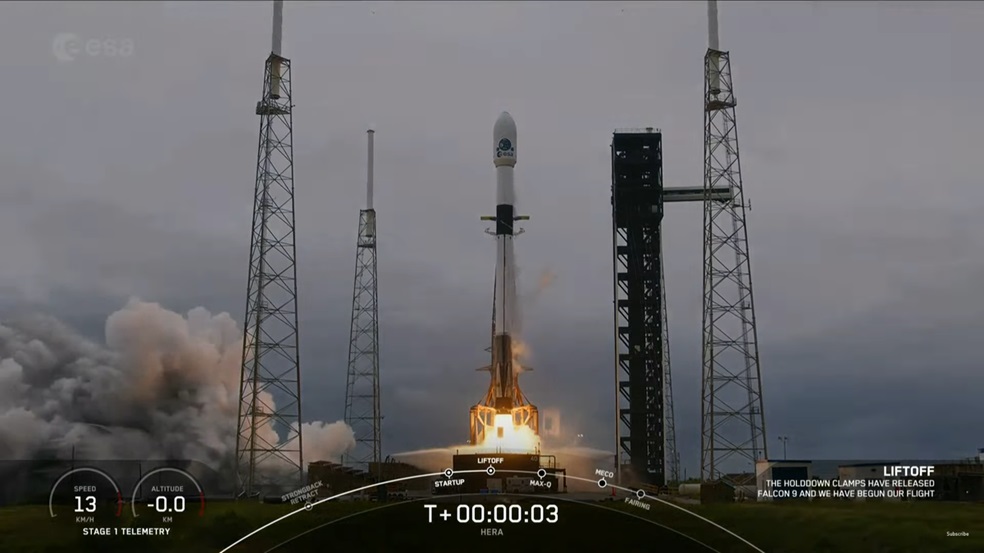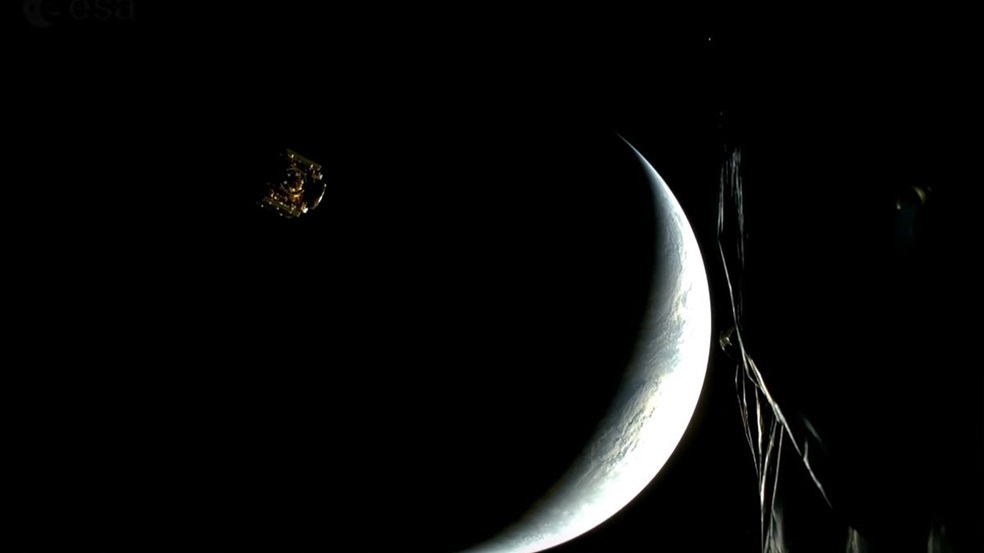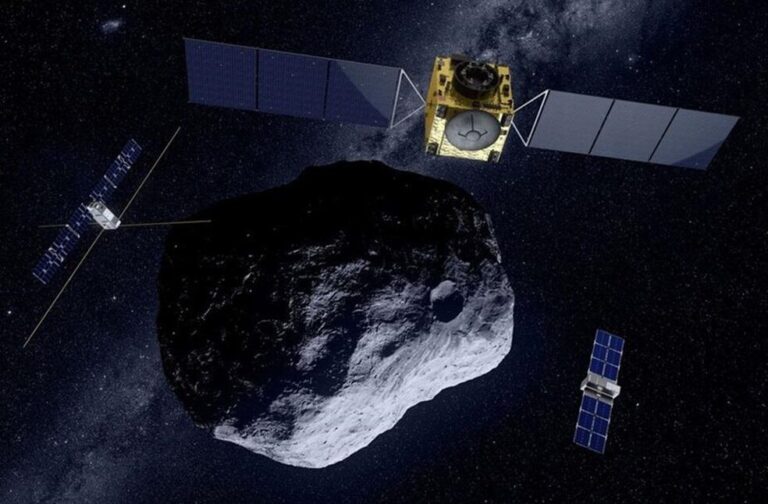Cape Canaveral: The European Space Agency (ESA) successfully launched its Hera mission on October 7, at 10:52 a.m. EDT (1452 GMT), aboard a SpaceX Falcon 9 rocket from Cape Canaveral Space Force Station in Florida. The mission marks a significant milestone in planetary defence as it embarks on a multi-million-mile journey to the binary asteroid system Didymos.
DART Mission
Hera mission aims to follow up on NASA’s DART (Double Asteroid Redirect Mission), which became popular in September 2022 when it impacted Didymos’ smaller companion, Dimorphos. This collision altered Dimorphos’ orbit, demonstrating a potential strategy for protecting Earth from rogue asteroids in the future. ESA’s Hera spacecraft will assess the aftermath of this impactful mission.
Astronomer Alan Fitzsimmons, a member of the Hera science team, expressed excitement about the mission’s start during a live webcast prior to launch. “We want to see that acquisition of signal at the end where Hera calls home and says, ‘It’s okay, I’m on my way to Dimorphos,'” Fitzsimmons stated.

Successful launch
Hera successfully separated from the Falcon 9’s upper stage approximately 1 hour and 16 minutes after liftoff, immediately contacting ESA officials to confirm its signal acquisition.
The launch of Hera went ahead after SpaceX received clearance from the US Federal Aviation Administration (FAA) to resume flights following an anomaly in a previous launch. Notably, the Falcon 9’s first stage did not return to Earth for a landing, as all fuel was needed for Hera’s mission. This marked the 23rd flight of the Falcon 9 booster, which had previously completed 10 Starlink missions and several other notable launches.
“Farewell, 1061, and we thank you,” said SpaceX’s John Insprucker, Principal Integration Engineer, to the booster after stage separation.

Hera’s Mission Objectives
The $398 million Hera spacecraft, along with two smaller cubesats, Milani and Juventas, is expected to arrive at Dimorphos in late 2026. During its journey, Hera will perform a flyby of Mars in 2025 to gain a gravity assist. The mission investigates the impact crater created by DART, assesses any changes to Dimorphos, and refines planetary defence models.
Josef Aschbacher, ESA Director General, emphasised that, “Hera is a bold step in scaling up ESA’s engagement in planetary defence.”



